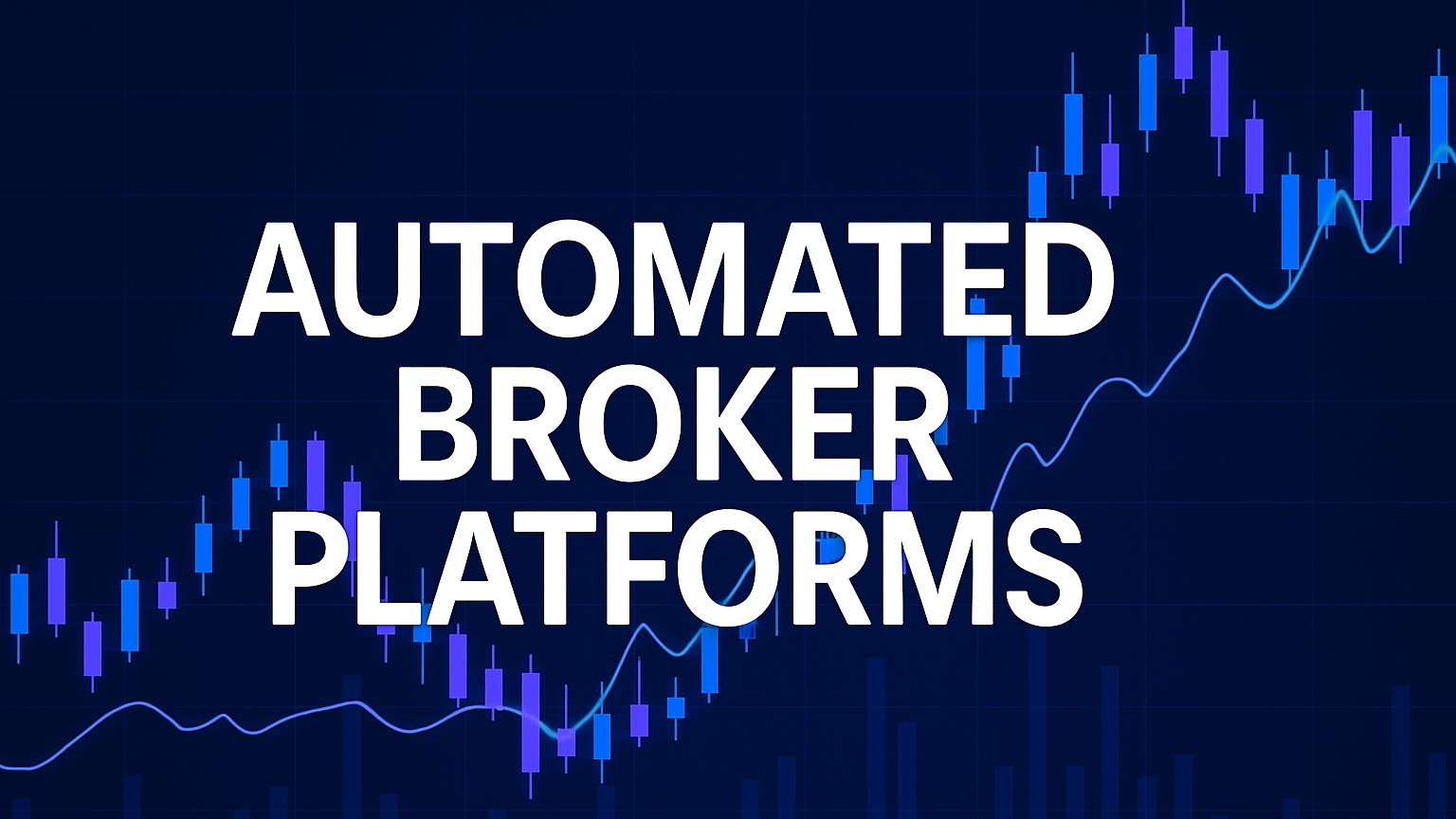Explore how to leverage Perl for efficient trading tasks, including data processing, strategy building, and trade automation.
Want to streamline trading tasks with Perl? This guide covers everything you need to know about using Perl in finance, from data processing to trade automation. Perl's powerful text handling and financial modules make it a practical choice for traders and institutions.
Key Takeaways:
- Why Perl?: Efficient text processing, strong regular expressions, and modules like
Finance::Quotefor real-time data. - What You'll Learn:
- Importing and cleaning market data
- Building and testing trading strategies
- Automating trade execution
- Optimizing performance for large datasets
- Tools You Need:
- Modules:
Finance::TA,Finance::Quote,Math::Financial - IDEs: Komodo IDE, Eclipse + EPIC, Vim/Emacs
- Modules:
- Quick Setup: Install Perl modules, configure your environment, and start coding with practical examples.
Quick Comparison of Essential Modules:
| Module | Use Case | Key Features |
|---|---|---|
Finance::Quote |
Real-time market data | Stock quotes, exchange updates |
Text::CSV_XS |
Data processing | Handles complex CSV structures |
PDL::Finance::TA |
Technical analysis | Indicators like SMA, MACD, Bollinger Bands |
Finance::Alpaca |
Trade automation | API for placing and managing orders |
This guide simplifies Perl's strengths for traders, helping you create efficient systems for market analysis and automation. Let’s dive in!
Getting Started with Perl for Trading
To dive into Perl for trading, you'll first need to install Perl and a few essential modules tailored for handling trading data and system integration.
Setup and Module Installation
Perl trading applications often rely on specific modules to efficiently process financial data. Here are some key modules to consider:
| Module Category | Essential Modules | Primary Function |
|---|---|---|
| Market Data | Finance::Quote | Fetch real-time stock quotes and market data |
| Data Processing | Text::CSV, JSON | Work with CSV files and JSON-formatted data |
| System Integration | IPC::Run | Manage processes and automate system tasks |
If you're using macOS, you might need to set ARCHFLAGS for modules with binary components. For example:
env ARCHFLAGS='-arch arm64 -arch arm64e -arch x86_64' cpan Finance::Quote
After installing the necessary modules, update your shell profile with the following line to ensure Perl can locate your libraries:
export PERL5LIB="/Users/YourUsername/perl5/lib"
Once the setup is complete, you can move on to selecting development tools to enhance your trading workflow.
Development Tools
Choosing the right Integrated Development Environment (IDE) can make a big difference in your productivity. Tools like GeniusTrader provide a robust suite of over 350 Perl modules and scripts for creating indicators and running backtests.
Here are some IDEs and editors to consider based on your needs:
| IDE/Editor | Best For | Key Features |
|---|---|---|
| Komodo IDE | Professional traders | Remote debugging, Git integration |
| Eclipse + EPIC | Enterprise developers | Advanced debugging tools |
| Vim/Emacs | Command-line experts | High customization, scripting |
| Notepad++ | Quick edits | Lightweight and simple |
For those relying on Finance::Quote, the latest version (1.64, released November 2024) includes important updates for major exchanges like ASX, Comdirect, and OnVista. These updates ensure the module stays reliable and up-to-date for your trading needs.
Working with Market Data
Data Import and Cleaning
Handling financial market data effectively means dealing with various formats and sources. For CSV-formatted market data files, the Text::CSV module is a go-to solution.
Here’s how to set up a basic CSV parser:
use Text::CSV;
my $csv = Text::CSV->new({
binary => 1,
auto_diag => 1,
blank_is_undef => 1
});
For more complex files, such as those with embedded commas or multi-line fields, switching to Text::CSV_XS can improve performance:
use Text::CSV_XS;
my $csv = Text::CSV_XS->new({
binary => 1,
encoding => "utf8",
allow_whitespace => 1
});
Here’s a quick comparison of modules for different data sources:
| Data Source Type | Recommended Module | Key Features |
|---|---|---|
| CSV Files | Text::CSV_XS | Handles complex CSV structures with efficiency |
| Real-time Quotes | Finance::Quote | Fetches live market data across exchanges |
| JSON Data | JSON | Parses API responses and integrates web services |
Having clean, structured data is crucial for performing accurate market analysis.
Market Data Analysis
Once your data is cleaned, you can use it to perform technical analysis and extract insights. The PDL::Finance::TA module is excellent for handling large datasets efficiently.
Here’s an example of calculating key indicators:
use PDL::Finance::TA;
use Finance::Quote;
# Calculate Moving Average
my $sma = ta_sma($close_prices, 20); # 20-period SMA
my $mfi = ta_mfi($high, $low, $close, $volume, 14); # 14-period MFI
You can also fetch live market data using Finance::Quote:
my $q = Finance::Quote->new;
my %quote = $q->fetch("australia", "CML");
my $current_price = $quote{"CML", "price"};
"The right way to do it -- by an order of magnitude -- is to use Text::CSV_XS. It will be much faster and much more robust than anything you're likely to do on your own." – Michael Carman
For large datasets, these technical analysis libraries are worth exploring:
| Library | Primary Use Case | Key Functions |
|---|---|---|
| Finance::TA | Technical Analysis | Moving averages, oscillators, volatility indicators |
| Math::Financial | Financial Calculations | Present and future value computations |
| Math::Business::EMA | Trend Analysis | Calculates exponential moving averages |
Lastly, ensure proper data encoding, especially when working with international data:
use open ':encoding(utf8)';
binmode(STDOUT, ":utf8");
With these tools and techniques, you can create efficient pipelines for processing market data, forming a solid base for building trading strategies.
Building Trading Systems
Technical Indicators
You can create custom technical indicators in Perl using specialized libraries. For instance, the Finance::TA module offers tools to develop advanced trading signals.
use Finance::TA;
use strict;
use warnings;
sub calculate_indicators {
my ($prices, $volume) = @_;
# RSI with 14-period lookback
my $rsi = Finance::TA::rsi($prices, 14);
# MACD with standard parameters (12,26,9)
my ($macd, $signal, $hist) = Finance::TA::macd($prices, 12, 26, 9);
# Bollinger Bands (20-period, 2 standard deviations)
my ($upper, $middle, $lower) = Finance::TA::bbands($prices, 20, 2, 2);
return ($rsi, $macd, $signal, $upper, $lower);
}
To optimize performance when calculating indicators, you can choose the right tools based on your needs:
| Indicator Type | Recommended Module | Processing Speed |
|---|---|---|
| Standard Indicators | Finance::TA | Fast (C-based) |
| Complex Calculations | PDL::Finance | Very Fast (vectorized) |
| Real-time Needs | Finance::Alpaca | API-rate dependent |
Once you've set up your indicators, test their effectiveness by backtesting your trading strategies.
Strategy Backtesting
A solid backtesting system is key to evaluating how your strategies perform under simulated conditions. Here's an example of a backtesting framework in Perl:
package Trading::Backtest;
sub new {
my ($class, %params) = @_;
return bless {
initial_capital => $params{capital} || 100000,
commission => $params{commission} || 0.001,
positions => {},
cash => $params{capital},
trades => []
}, $class;
}
sub execute_strategy {
my ($self, $data, $strategy) = @_;
foreach my $date (sort keys %$data) {
my $signals = $strategy->generate_signals($data->{$date});
$self->process_signals($signals, $data->{$date});
}
}
This framework allows you to simulate trades, account for transaction costs, and measure the overall performance of your strategy. Once you've fine-tuned your approach, you're ready to move on to automation.
Trade Automation
To automate trade execution, the Finance::Alpaca module is a powerful tool. Here's an example of how to place an order:
use Finance::Alpaca;
my $alpaca = Finance::Alpaca->new(
key_id => 'YOUR_KEY_ID',
secret_key => 'YOUR_SECRET_KEY',
paper => 1 # Use paper trading for testing
);
my $order = $alpaca->submit_order(
symbol => 'AAPL',
qty => 100,
side => 'buy',
type => 'market',
time_in_force => 'day'
);
Automation tools, like Vivek Ayer's RSICalc, simplify technical analysis by aggregating RSI data across multiple stocks, saving time and reducing errors.
When building automated trading systems, keep these key elements in mind:
| Component | Key Focus | Implementation Approach |
|---|---|---|
| Risk Management | Position Sizing | Use percentage-based allocation |
| Error Handling | API Failures | Add retry mechanisms |
| Performance | Execution Speed | Use connection pooling |
Code Optimization
Performance Tips
To tackle performance bottlenecks in your Perl code, Devel::NYTProf is a great tool for pinpointing areas that need improvement. Below are some examples of optimized code for critical trading operations:
use strict;
use warnings;
use Benchmark qw(cmpthese);
my $price_string = "1,234.56";
$price_string =~ tr/,//d;
my @prices = sort { $a <=> $b } @raw_prices;
Optimization Techniques and Their Impacts
| Optimization Technique | Performance Impact | Best Use Case |
|---|---|---|
| Default Sort | 2x faster than Schwartzian Transform | Numeric comparisons |
tr Operation |
Faster than regular expressions | Character replacement |
| Packed Sort Keys | 2x speed improvement | Sorting with multiple criteria |
For real-time trading systems, caching expensive calculations can save time and resources. Here's an example:
my %cache;
sub get_technical_indicator {
my $symbol = shift;
return $cache{$symbol} if exists $cache{$symbol};
$cache{$symbol} = calculate_expensive_indicator($symbol);
return $cache{$symbol};
}
As Miyamoto Musashi wisely said, "Do Not Engage in Useless Activity". Focus on efficiency to make every operation count.
Next, let’s explore how to handle large datasets effectively.
Handling Large Datasets
Managing large datasets is a common challenge in trading systems. To handle this efficiently, process files line-by-line using modules like Tie::File and File::Temp:
use Tie::File;
use File::Temp qw(tempfile);
open(my $fh, '<:raw', 'market_data.csv') or die $!;
while (my $line = <$fh>) {
chomp $line;
# process each line
}
For high-frequency trading, you can process data in chunks using a sliding buffer:
my $buffer_size = 1024 * 1024; # 1MB buffer
my $buffer;
while (sysread($fh, $buffer, $buffer_size)) {
analyze_market_data($buffer);
}
For large lookup tables, DBM files are an efficient option:
use DB_File;
tie my %symbol_data, 'DB_File', 'symbols.db' or die "Cannot create DBM: $!";
$symbol_data{'AAPL'} = { price => 150.25, volume => 1000000 };
Performance Comparison for Processing a 3GB File
| Processing Method | Time (3GB File) | Memory Usage |
|---|---|---|
| Naive Approach | 12h 40m | High |
| Raw File Mode | 6h | Medium |
sysread() |
1h 23m | Low |
| Sliding Buffer | 31m | Minimal |
These techniques can drastically improve the performance of Perl applications, especially in financial trading environments where speed and efficiency are key.
Conclusion
Summary
Perl continues to be a strong choice for data processing and trade automation. Its design makes it a reliable option for financial applications. With GeniusTrader's ecosystem of over 350 modules and Perl's capabilities in text processing, traders have the tools to create effective trading strategies. This combination allows for seamless integration of data analysis, strategy development, and automation into trading workflows.
If you're looking to sharpen your skills and optimize your trading systems, the following resources can help.
Learning Resources
Here are some essential resources to boost your Perl trading development expertise:
| Resource | What It Offers | Ideal For |
|---|---|---|
| CPAN | A vast library of modules | Discovering specialized financial packages |
| PerlMonks | Expert advice from the community | Getting answers to specific coding issues |
| GeniusTrader | 350+ trading modules | Building complete trading systems |
Tips for getting started:
- Explore CPAN's financial modules, particularly Finance::TA, to implement technical analysis tools.
- Use PerlMonks for practical advice and code reviews.
- Dive into GeniusTrader's documentation and API details to better understand trading system development.
While Perl is excellent for data processing in financial applications, it may not be the best fit for ultra-low-latency tasks like high-frequency trading. In such cases, consider pairing it with other technologies. The goal is to make the most of Perl's strengths while being aware of its limitations.








